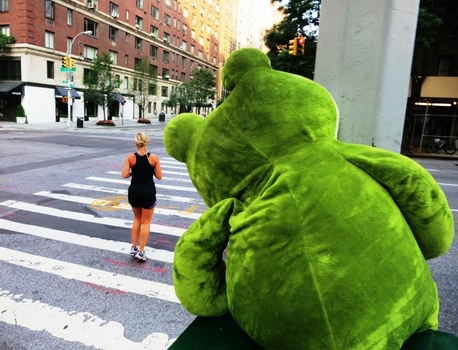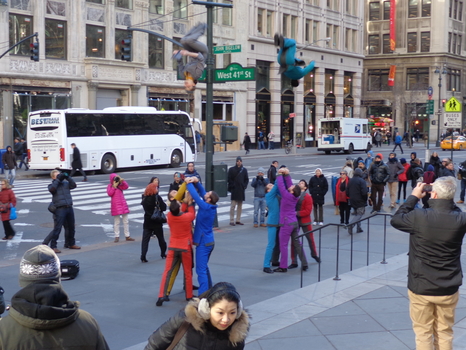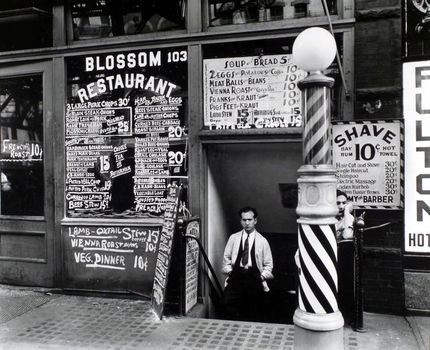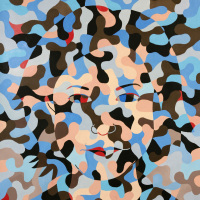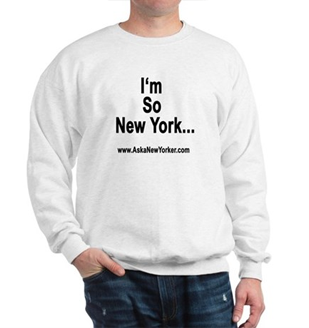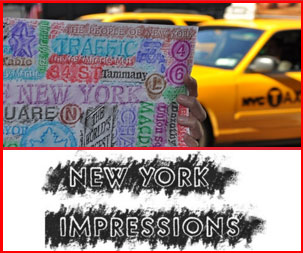One of the most imposing realities of art is the frame. It serves as the unconscious limit of our attention. It defines the rendering of artistic vision and implies all else incidental. Yet, what is presented within the frame, originated from without the frame. And what intrigues us about art is how it directs our attention deeper into the world and into ourselves to broaden our frames of reference.
In Gordon Sasaki’s new exhibit, Hard & Soft: New Works, there are conspicuously no frames. The collection made over the last two years is a contest of contrasts that subtly secrete similarities to achieve unique expressions. They remind us that we do not see the world as it is, but rather how we define it. And Mr. Sasaki transcends these delineating distinctions to force the audience to accept a more universal perspective of reality.
The eight portraits in the front room play upon contrasts between the similar and the unique. The faces of young ladies are meticulously rendered through camouflage with an alternation of the color scheme but not the pattern. They simultaneously present the figure while also declaring the setting. It is not simply a presentation of the shape and feature of the figure, but also a declaration of the space that the figure occupies. The paintings liquefy reality so the audience literally witnesses substance flowing through form.
The two paintings of chairs which accompany the portraits share a similarity in medium and technique while differing in orientation. Instead of presenting the uniqueness of individuality through the most distinguishing feature – the human face, individuality is explored through the common utility of furniture. At the base of each leg of the chairs, there is a tiny wheel. They challenge the notion of fixity and mobility, but they also reference a subtle detail of Mr. Sasaki’s life. Years ago, Mr. Sasaki suffered a spinal injury in an automobile accident which now requires his use of a wheelchair. He has placed wheels at the base of his furniture at home as a matter of necessity to help him move objects around. In this way, all the common objects of our lives are imbued with our personal experiences through both taste and utility. This demonstrates how all the common items we share in our lives are distinguished by our own nature and interests. Just as we all share the same paths, we all travel in our own way on our individual journeys to our unique destinations. The paintings demonstrate the dynamics between the commonality of object and infinitely unique perspective.
The sculptures take us beyond the personal to explore the relations of the subject with the environment. The first sculpture visitors will notice is called Rat Suit – a life size sculpture of a rat with a zipper on the back. The zipper opens to reveal a plush, pink interior while making a parody of a handbag, which is generally used to carry the most personable belongings including one’s cards for identity, credit and other means of social security. The exterior of the sculpture is made of inner tubes with conspicuous connectors for an air pump. The piece is part of a series with two life size human sculptures similarly made to emphasize the interplay of the exterior with the interior. After all, the inflation of the inner tube, which defines the function by fulfilling the form, is only a difference of the placement and pressure of air.
The other sculptures in the exhibit are made of transparent vinyl. The sculptures not only emphasize what we see of and in them, but also, what we see through them. The sculptures are dominated with a suspended figure of a great white shark swimming through the center of the room with a toothed mouth agape, devouring its way through the world.
As we continue to encapsulate our lives in society through our own developments, the exhibit reflects upon how we draw the lines between human nature and the entirety of the natural world, and from this, alerts us to the arbitrariness of these distinctions. In our cities, we are surrounded with amenities that are designed exclusively for our convenience and benefit, yet how complete and hermetically sealed can this encapsulation be? It is a stark reminder that we are not systems exclusively within ourselves, but rather small components in an endless system of the universe in which we exist.
The sculptures of Adam and Eve explain that the paradise we lost still surrounds us. Yet, through our self-consumed concerns of what we perceive to be distinctly human nature, what we have lost is our sense of the nature in which we exist. And through our individuality, instead of forcing distinctions, we can share our complementary differences.
Great art does not present us with a figure, an image or an arrangement. Great art presents us with a new way to view the world. Mr. Sasaki’s work challenges our perspective. Instead of the audience seeing the world through definition and distinction, the audience sees the world through involvement and interaction. The sculptures allow the audience to see the world in which they are set. As paintings have no negative space, the background and the foreground are intrinsically connected. The subject is indistinguishable from the situation. Content and the context are one.
As Mr. Sasaki explained in conversation, he is less interested in theory and more fascinated with the renderings of reality. One of his principle concerns is “How art engages us with our environment and ourselves.” Through this, art is not an exclusive artifact, but an inclusive portal through which we explore ourselves and one another.
At the end of my tour, Mr. Sasaki turned off the light in the gallery to show the paintings Invisible Wheelchair and the sculpture Skull. The pieces are made with phosphorescent acrylic and in the darkness, Mr. Sasaki’s art continued to shine.
Gordon Sasaki’s work has been exhibited broadly in Europe, Asia and America and is held in collections at the Hawaii State Arts Museum, the Sony Corporation, the Friends Museum, VSA and private collections. More images of his work are available on his website at gordonsasaki.net. The exhibit is now showing at Moe’s Meat Market Gallery at 237 Elizabeth Street in New York City and is open to the public December 13 and 14 from 12 to 5 PM. Viewing can be made by personal appointment through December 31 by contacting Mr. Sasaki at 646 567 0459.
Cover Image: “Misa” by Gordon Sasaki.
Garrett Buhl Robinson is a novelist and poet. He recently adapted one of his novels into a musical which he has begun performing for the public. His website can be viewed at robinsong.nyc.


